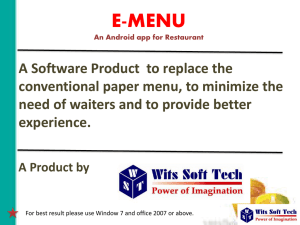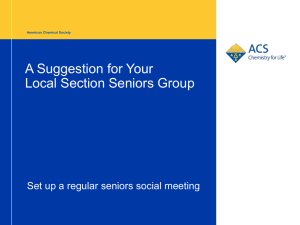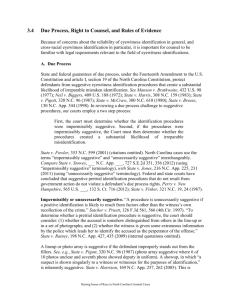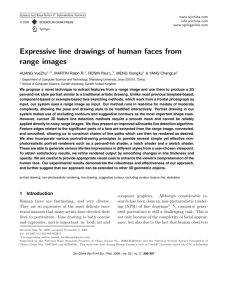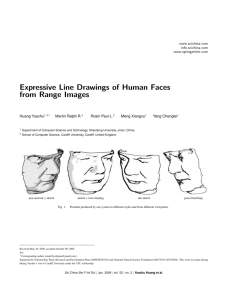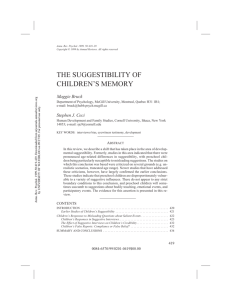Suggestive selling in the restaurant business: a framework
advertisement
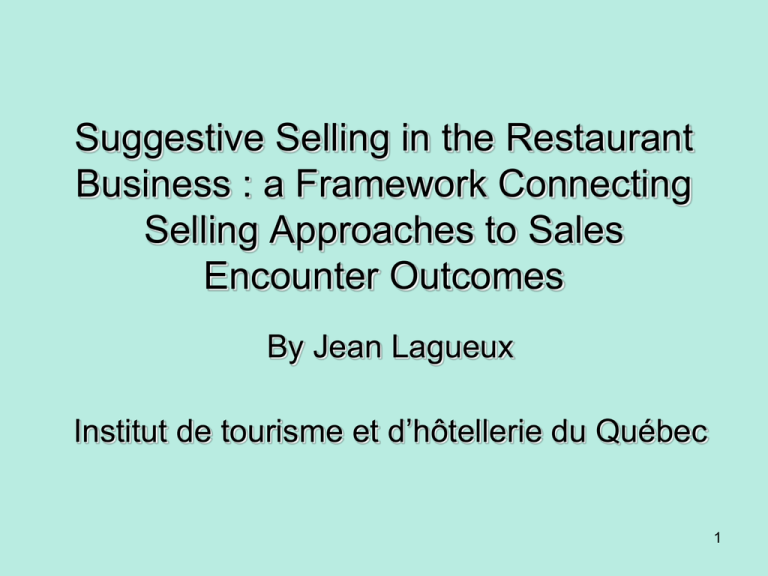
Suggestive Selling in the Restaurant Business : a Framework Connecting Selling Approaches to Sales Encounter Outcomes By Jean Lagueux Institut de tourisme et d’hôtellerie du Québec 1 Objectives • Three fold – Define a framework of selling approach in the environment of restaurant selling. – Measure the impact of the different sales approach on sales encounter outcomes. – Explore the restaurant / waiter’s social responsibility context 2 Selling Styles • • • • • • Suggestive selling Consultative selling Transactional selling Persuasive selling Seduction selling Relational selling • • • • • • Partnership selling Adaptive selling Cross-selling Up-selling Add-on selling Value-added selling 3 Suggestive Selling • Lacks – Proper definition – Theoretical basis – Based on : • Professional experience • Anecdotal evidence – Effects are not well defined 4 Background • • Courtesy in a restaurant setting and suggestive selling (Brooks, 1961) Factors influencing restaurant servers to use suggestive selling (Johnson & Masotti, 1986) – Definition : “asking a patron if he would like wine with the meal ordered” • • • • • Suggestive selling versus the volume of business (Redmon & Dickinson 1990) Recommendations made by the server at different times of the meal (Lynn, 2003) “the art of selling a customer the original item he or she came in to buy, plus additional items that complement the original item” (Kizer & Bender 2007) 70 % of 1066 restaurant servers use suggestive selling (Lynn & McCall, 2009) Conclusion – Economic benefits – Not connected to customer’s needs 5 Consultative Selling • Type of awareness attributed to restaurant servers – Mars and Nicod (1984) • Customer-oriented selling : – Comes from the marketing concept – Customer satisfaction is integrated in the equation of success – Seen as a problem solver • Saxe and Weitz (1982) • Providing information - an advisor – Job satisfaction, organizational commitment, sales training and sales skills • Liu and Leach (2001) 6 Consultative Selling • Approach used in situations when a customer needs to find a solution to a problem that has not yet been resolved or when he needs help or a suggestion – Zeyl (2003) • Upselling technique that has the goal to increase the average check while enhancing the guest experience – Shock, Bowen, and Stefanelli (2004) • Conclusion – Difficulty assessing customer’s needs – Specific needs have not been satisfied – New approaches can be suggested to him 7 Transaction Selling Products are well known to the customer (Zeyl, 2003) – – – – – Large amount of information available to the customer Previous knowledge The use of salespeople is less required To describe features To take orders 8 Persuasion Selling • Manske and Cordua (2005) – – – – – – – – – Use of different approaches to persuade Reciprocity Scarcity Liking Credibility Power Similarities Physical attractiveness Empathy • Extrinsic aspects of the purchase situation. 9 The Server Self-Monitoring • Adaptation in response to the perceived differences (Snyder, 1974) • Motivation to alter the behavior – Theory of social exchange (Thibaut & Kelley, 1952) • Cost of effort versus personal gain – Adaptive selling • • • • • Empathy Androgyny Being an opener Locus of control Self-efficacy • Service Predisposition (Lee-Ross, 2000) 10 Selling Environment Differences with retail settings • Sequence of service (McMahon & Schmelzer, 1989) – Roles and responsibilities – Simultaneity • Contact points • Captive aspect of the service encounter • The importance of the menu 11 What makes it suggestive ? • Bringing to active memory, options – Forgotten – Ignored – Unknown • Altered behaviour – Considering needs – Trying to persuade • Not simply related to presentation 12 Figure 1: Suggestive Selling High Customer Orientation Low Consultative selling Transaction selling Persuasion selling Low High Sales Orientation 13 Figure 2: Effects of suggestive selling Consultative selling Variable Higher Sales performance Lower Persuasion selling Higher Variable Transaction selling Variable Customer satisfaction 14 Contribution • Definition for suggestive selling • Redefining the SO-CO in a service environment • Contrasting sales to customer satisfaction in a new way 15 Conclusion • Marketing my products • Marketing to the customer • Marketing with the customer 16




